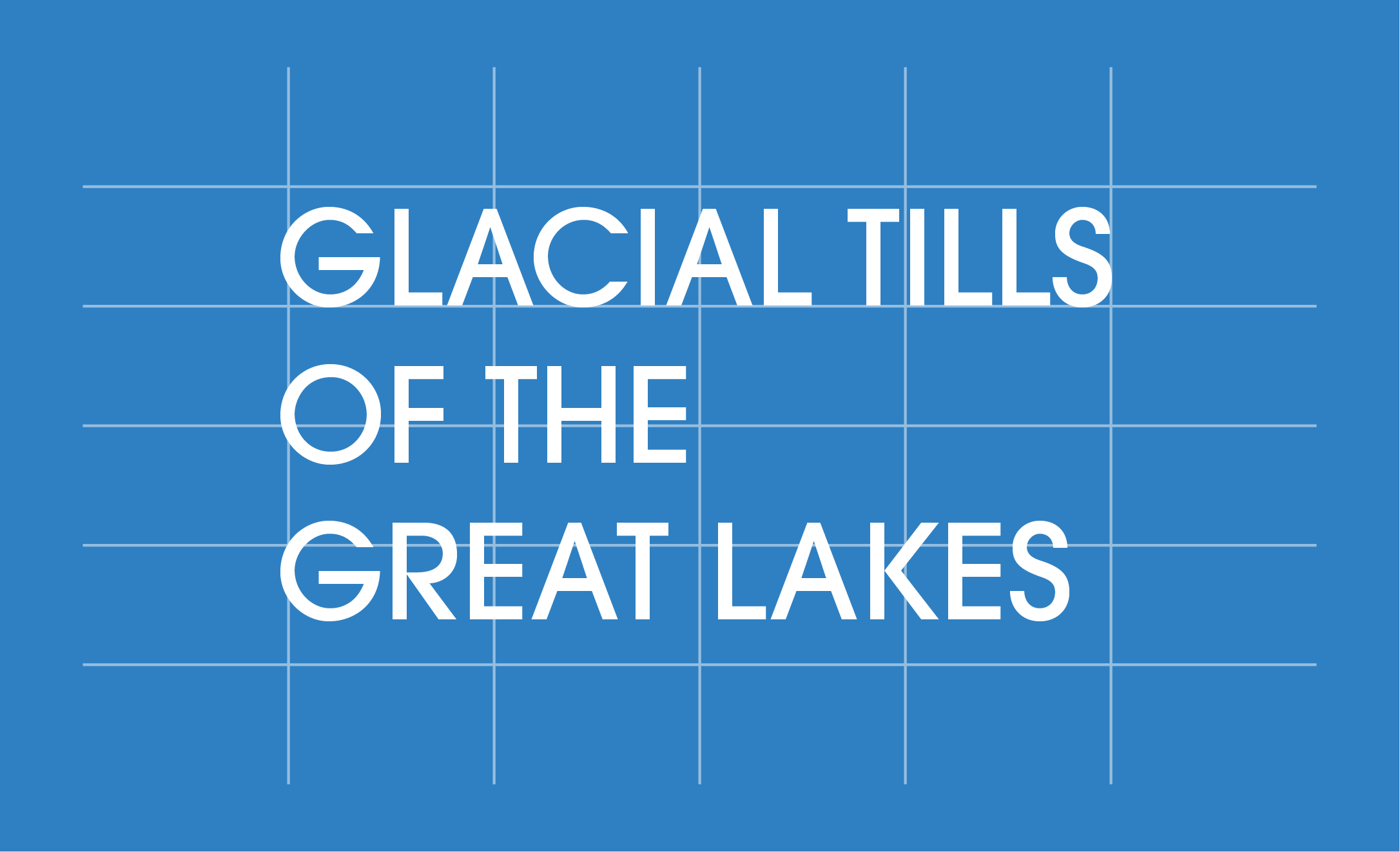
sampling glacial clays to annotate a GIS base map & color swatch books
CATALOGING 100 SAMPLES OF GLACIAL TILL TO PRODUCE A GEO-CODED INVENTORY OF PLEISTOCENE CLAYS
Great Lakes Clay
Each glacial period pushed debris known as glacial till down into the Great Lakes region in a series of interdigitated lobes defined by the contours of the landscape and the ridges formed where the glacier stopped advancing. Throughout the sequential glaciations, the landscape of the present-day Great Lakes began to take shape. In some areas the clay is nearly 2,000’ (610m) thick. These clay deposits have been documented for over a century, but the kind of map I’m producing is aimed at giving audiences new perspectives on the diversity of clay.
The Laurentide Ice Sheet slathered a thick layer of glacial clay over the entire Great Lakes region during the last ice age. The distribution pattern of these clays and tills has influenced the industrial and agricultural patchwork of the region, including brick works, industrial scale potteries, clay quarries, wineries and vineyards, and commodity farming. But the clay is not a homogenous in color, composition, or quality; veins of clay a mere 50 feet apart can be so different in terms of color that they appear to be unrelated.
This project aims to produce a catalog and GIS map of the diversity of glacial till throughout the Great Lake region. Samples of glacial clay are being collected from 100 sites around the Great Lakes region, dried in a Yamato DX-300 Drying Oven, pulverized in a Raymond Mill, mixed with bleached linseed oil, and mulled in an Elcometer 2000 Muller Laboratory Grinder before being packed in aluminum paint tubes. From this stock of geocoded oil paint, an edition of chip decks will be produced as artifacts of the project.
GLACIAL TILLS OF THE GREAT LAKES is a part of my practice that allows me to contextualize myself in the Great Lakes region which helps me better understand the region so that I can produce more responsive object-based work in my studio.
I’ve spent a year working out the kinks in this process, and I’m excited to reveal this edition later this year.

The diversity of glacial clays in the different terminal moraine systems across the great lakes region is astounding. clay is not just clay, and the color can vary from one mile to the next in any given deposit.
i’ll report back with monthly updates of what I find.
BIO
RYAN DEWEY works in sculpture, research, and land art, looking at connections between people, places, and land use to produce a kind of ecological dreaming. Donna Haraway has called his work one of her favorite examples of art about the anthropocene in her book Staying With The Trouble. His archive is housed at the Center for Art + Environment at the Nevada Museum of Art. He has lived on several islands, in several jungles, in one desert, on one mountain, and on two of the five Great Lakes. He is a member of the American Society of Polar Philatelists and has received residencies at ACRE (Chicago), the Alps Art Academy (Switzerland), and the Montello Foundation (Nevada), as well as serving two appointments as visiting researcher in cognitive science at Case Western Reserve University where he wrote the open-access book Hack the Experience: New Tools for Artists from Cognitive Science (Punctum Books, 2018).



